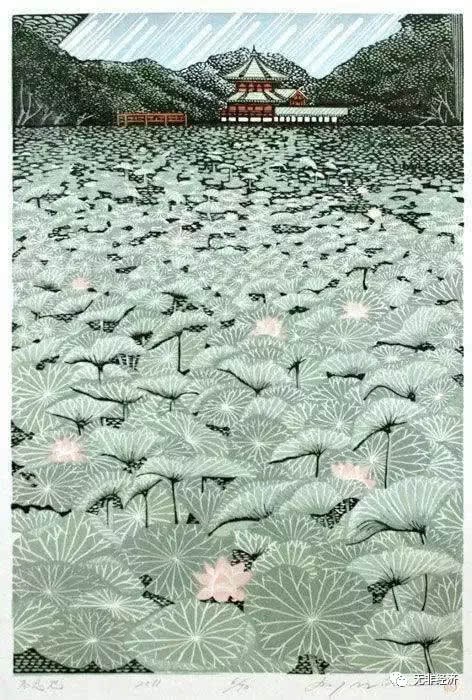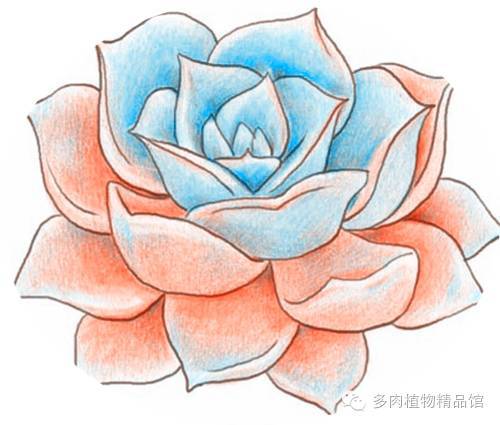On the Source of sorrow from the Tale of Genji (2)

DaDa / tr. by Phil Newell)
"material sorrow", which originated from the aristocratic culture of the Heian era, is an important concept that runs through Japanese traditional culture and aesthetic consciousness. As pointed out in Yuxiaocao, the Tale of Genji, written by a Japanese scientist, Benju, "the way of husband and song can be summed up in the word 'mourning for things'. All harmony songs can be blinded by this word from the time of God to the present, and even to the endless harmony songs of later generations. "
Starting from the artistic expression of literature and the aesthetic acceptance of readers, combined with the ideological and artistic appreciation of the Tale of Genji, this paper puts forward a more systematic theory of "material sorrow".
First of all, he made a more accurate explanation of the meaning of the word "material sorrow". "things" refers to the things talked about, things mentioned in stories, things seen in life, is a general word; "sadness" refers to the sound of sighing made by what you see and hear that touches your mind. Secondly, he clarified the diversity and subjectivity of the feeling of "material sorrow". "sadness" is not limited to sorrow, but also includes other emotions, "sadness, melancholy, love, touching."
Third, he stressed that the core emotional expression of "material sorrow" should be love. "many situations of life appear in the relationship, such as bitterness, sadness, grievance, anger, fun, joy and so on. If you give up a relationship, it will be difficult to show the depth of human feelings and the true essence of sorrow. " Fourth, it further puts forward the theory of "knowing sorrow for things". "for things, what is good is good, what is evil is evil, those who are sad feel sad, those who are sad feel sad, and those who know how to appreciate these things are called sorrow for knowing things.
Since then, as a special aesthetic modality and literary and artistic feature in Japanese aesthetic thought, "material sorrow" has been generally fixed and has been used all the time.
In the essentials of Ziwen, Benju Xuan believes that of all human relationships, the most unforgettable is the relationship between men and women. In a relationship, the one who can make people "sad" and "sad" is the unethical love, that is, "lecherous". "nothing can reflect human feelings more than 'lecherous'. Therefore, the 'lecherous' people are the most sensitive to the hearts of the people, and they also know the most about 'sad things'. " The vast majority of the main characters in the Tale of Genji are "lecherous" and have inextricable love, including incest, seduction, adultery, rape, love and so on. The expectation, yearning, excitement, anxiety, self-remorse, worry, sadness, pain and so on caused by this are all valuable human feelings. As long as it comes from true feelings, there is nothing wrong with it, and they all belong to "material sorrow", which can make readers "know the sorrow of things".
It seems that the Tale of Genji is interested in talking about the love of virtue, but it is not the appreciation or admiration of virtue, but to show "material sorrow". For example, he said: the purpose of accumulating muddy water is not to appreciate it, but to plant lotus flowers. If you want to appreciate the beauty of the lotus, you can't do without muddy water. Writing about the unmarried love of virtue is like accumulating muddy water, in order to get the beautiful "sad flowers"
Therefore, in the Tale of Genji, those unorthodox "lecherous" people who are morally flawed and guilty are good people who "know how to grieve". For example, Genji was flirtatious and unorthodox all his life, but he was glorious and rich all his life, and won the title of "too supreme emperor". On the contrary, those moral guardians are written as villains who do not know the sorrow of things. The so-called persuasion of good and punishment of evil means that good is rewarded with good, and evil is punished with evil, so that readers can be cautioned, and the Tale of Genji can never become a lecherous exhortation. If we read the Tale of Genji with the heart of admonishment, the feeling of "mourning" will be obscured, so the theory of teaching is the "magic barrier" of understanding the Tale of Genji.
We can see that there are only three choices for the fate of women in the Tale of Genji, either to go to the grave, or to cut off the fate of the dust, or to stay alone in the boudoir, even though life is still dead. The disastrous fate of these women, like Genji's life experience, reflects the aesthetic characteristics of purple-style objects and sorrow.
Some of the tragedies of women in the Tale of Genji are caused by the marriage system, and some are imposed on themselves by women bound by feudal ethics. Their tragedies make people sympathize and make people angry at their ignorance of resistance and consciousness. The evil institution of marriage, the self-enslavement of women. All these have caused the tragedies of the vast number of women in the feudal era. Although there are different reasons for the unfortunate fate of these women, their tragedies have common tragic roots. Not only the women written by the Purple Department, but also the Purple Department itself can not escape the tragic fate imposed on them by the times and social traditions and customs.
Seventeen-year-old Guangyuan danced "Qinghai Wave" at the flower banquet. The head is equipped with red leaves, dancing in all directions, and red leaves fall in graceful songs. It is so beautiful that it even makes people shudder. As gorgeous as that, brilliant, Sinorama dancing makes people dizzy and want to cry. All of a sudden, the reader can't help feeling lost. Mapping to the reality of the Heian era, as Ienaga Saburo commented on Kotoshi in the History of Japanese Culture: "even like Kwangyuan, regardless of appearance, origin, or status, his talent is far higher than that of ordinary people." in the face of an unchangeable fate, after all, it looks pale. " Takeo Fujiwara, once known as the "prototype of Guangyuan," the proud public minister who once recited at the banquet, "this world is my world, like a full moon." when his daughter was about to give birth, he could do nothing but pray to give birth to a baby boy. This is the sorrow of that society. It is also the "material sorrow" of that era.
- Prev

On turning pots and pruning roots of stone flowers
Hello succulent life stone flower seedling transplant or adult turning pot is best carried out in summer when the old plant is very wrinkled or completely dry. If you turn the pot prematurely in spring or early summer, the old plant is likely to absorb water and is unwilling to.
- Next

The opportunity and crisis of succulent plant maintenance coexist in autumn and master the correct method to raise explosive pots.
When I woke up one morning, I found that autumn was still coming quietly. I suddenly found that I needed a coat before I could go out. I was overjoyed at this time. Autumn is a good time for succulent coloring, so I immediately moved outside to accept the sun.
Related
- Wuhan Hospital Iron Tree Blooming Result Was Instantly Frightened by the Gardener Master
- Which variety of camellia is the most fragrant and best? Which one do you like best?
- What is the small blue coat, the breeding methods and matters needing attention of the succulent plant
- Dormancy time and maintenance management of succulent plants during dormancy
- Minas succulent how to raise, Minas succulent plant pictures
- What are the varieties of winter succulent plants
- How to raise succulent plants in twelve rolls? let's take a look at some experience of breeding twelve rolls.
- Attention should be paid to water control for succulent plants during dormant period (winter and summer)
- Watering experience of twelve rolls of succulent plants
- Techniques for fertilizing succulent plants. An article will let you know how to fertilize succulent plants.

